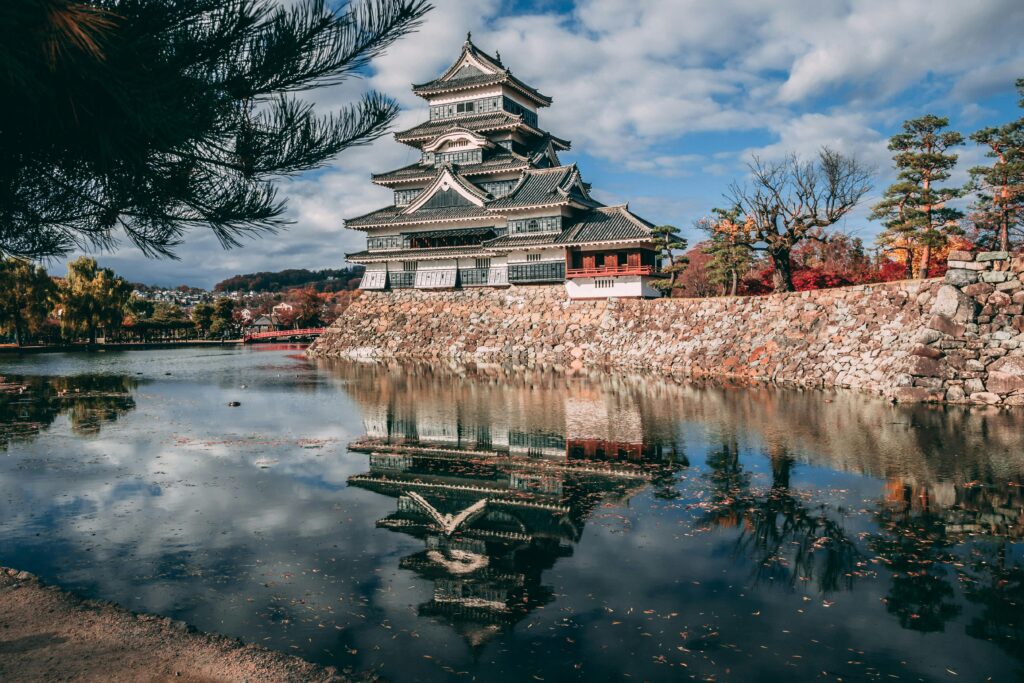“Discover Tsumago, Japan’s hidden gem, off the beaten path. Explore unique, traditional experiences missed by most tourists. Uncover the magic, dive in!”
Introduction: Step Back in Time in Tsumago
As I wandered Tsumago’s cobblestone streets, the crisp mountain air carried whispers of the Edo period. The scent of cedar from centuries-old buildings mingled with the earthy aroma of roasted sweet potatoes sold by a street vendor. This post town on the Nakasendo Way—one of Japan’s ancient highways—has preserved its 17th-century charm with car-free lanes, wooden inns, and lantern-lit evenings. Whether you’re a history buff, hiker, or culture seeker, this guide covers the best Tsumago (Japan) experiences, from seasonal highlights to hidden teahouses.

Why Visit Tsumago?
✔️ One of Japan’s best-preserved post towns, frozen in time with strict preservation laws banning modern signage.
✔️ Gateway to the scenic Nakasendo Trail (Tsumago to Magome hike), where you’ll pass waterfalls and thatched-roof farmhouses.
✔️ Authentic ryokan stays with tatami floors, communal onsens, and multi-course kaiseki dinners featuring wild mountain vegetables.
Local Insight: Don’t miss the Saturday farmers market, where I tasted fresh persimmon mochi from a vendor who shared stories of her family’s 200-year-old recipe. As she wrapped the mochi in hand-pressed washi paper, she explained how every autumn, villagers forage for wild persimmons in the Kiso Valley forests.
When to Visit Tsumago for the Best Experience
Best Seasons
- Spring (March–May): Cherry blossoms frame the streets in early April. The Nakasendo Trail becomes a tunnel of pink, with petals drifting onto the stone path. Book ryokans 3–6 months early—they fill fast!
- Autumn (September–November): Fiery foliage peaks in late October. The Kiso Valley transforms into a mosaic of red maples and golden ginkgos. Ideal for hiking with crisp temps (10–18°C).
- Avoid: Summer (crowded, 85% humidity) and winter (some trails close due to snow, though snow-laden thatched roofs are magical).
Festivals
- Tsumago Shuku Matsuri (May): Locals dress in Edo-period costumes, reenacting samurai processions. Try gohei mochi (skewered rice cakes glazed with miso).
- Obon (August): Lantern-lit dances honoring ancestors. Join the Bon Odori circle dance—even if you miss the steps, locals will cheer you on.
Pro Tip: Visit on weekdays for fewer tourists. Sundays bring day-trippers from Nagoya.
3-Day Tsumago (Japan) Itinerary
Day 1: History & First Impressions
Morning
– Arrive via Nagiso Station (2.5 hrs from Nagoya on the JR Shinano Express). Take the bus to Tsumago (15 mins, ¥300). Store luggage at the tourist office (¥500).
– Explore Tsumago-juku Preservation Area. Key stops:
– Waki-Honjin Okuya Museum (¥300): A restored Edo-era inn where feudal lords once stayed. Touch the shoji screens blackened by centuries of lantern smoke.
– Kotoku-ji Temple: Serene gardens with 300-year-old maple trees. Listen for the suzu (wind chimes) during meditation hours (10 AM–12 PM).
Afternoon
– Lunch at Fujioto for handmade soba noodles (¥1,000). Their tempura soba uses wild mountain greens foraged that morning.
– Hike the Nakasendo Trail to Magome (8 km, 2.5 hrs). Highlights:
– Odaki-Medaki Waterfalls: Twin falls said to be a lovers’ sanctuary.
– Magome’s Viewpoint: A stone marker offers Instagram-worthy valley panoramas.
Evening
– Stay at Ryokan Fujioto (from ¥16,000/night with kaiseki dinner). Soak in the hinoki (cypress wood) onsen while fireflies flicker in the garden.

Day 2: Culture & Hidden Gems
Morning
– Join a washi paper workshop (¥2,500) at Kiso Washi Kaikan. Dip screens into vats of mulberry pulp—my clumsy attempt became a lopsided but cherished bookmark.
– Visit the Rural Landscape Museum to see senmaida (terraced rice field) tools. Try grinding buckwheat with a stone mill.
Afternoon
– Tea ceremony at Ganko-ro (¥500) with Mrs. Suzuki, who recounts Tsumago’s history between sips of frothy matcha. Her family has served tea here since 1850.
– Stroll backstreets to find unmarked teahouses—I stumbled upon one serving matcha with wild yuzu sweets, the citrus peel still clinging to the rind.
Evening
– Candlelight walk (Fri/Sat nights): The town turns off electric lights for an Edo-era ambiance. Lanterns cast shadows on noren curtains as shamisen music drifts from ryokans.
Day 3: Nature & Departure
Morning
– Sunrise hike to Tsumago Castle Ruins (30 mins uphill). The misty valley view is worth the climb—bring a thermos of genmaicha (brown rice tea).
– Breakfast at Minshuku Daikichi: Homemade pickles, grilled ayu (sweetfish), and miso soup with yamaudo (mountain potatoes).
Afternoon
– Bus to Nagiso Station. Stop en route at Midono-no-Yu hot spring (¥800). Soak in sulfur-rich waters under open skies—the cure for hike-weary legs.
Tsumago (Japan) Backpacking Tips
Budget Breakdown
- Ryokan: ¥8,000–¥20,000/night (splurge on kaiseki—it’s art on a plate).
- Meals: ¥1,000–¥3,000/day. Budget tip: Convenience store onigiri for lunch.
- Activities: Most museums cost ¥300–¥500.
Packing List
- Essentials:
- Cash (only 10% of businesses accept cards).
- Hiking shoes (trails are rocky).
- Portable Wi-Fi (limited connectivity—embrace the digital detox).
Transport

- From Tokyo: Take the JR Shinano Express to Nagano (3.5 hrs), then transfer to Nagiso.
- Buses run hourly from Nagiso to Tsumago (¥300). Last bus departs at 5:30 PM.
Local Insight: I missed the last bus and hitched a ride with a farmer—his truck bed was the best (and bumpiest) Uber alternative! He gifted me a kaki (persimmon) from his orchard.
FAQs About Tsumago (Japan)
1. Is Tsumago wheelchair accessible?
Limited. Cobblestone streets and ryokans have steps, but the main street is flat. Call ahead—Ryokan Hanaya has one accessible room.
2. Can I do a day trip from Tokyo?
Possible but rushed (6+ hrs round-trip). Stay overnight to experience candlelight walks and ryokan hospitality.
3. Are there ATMs in Tsumago?
Only one at the post office (open 9 AM–4 PM). Withdraw cash in Nagiso.
4. What’s the best ryokan for solo travelers?
Minshuku Daikichi (¥6,500/night) offers affordable tatami rooms and communal meals with chatty hosts.
5. How long is the Nakasendo Trail hike?
Tsumago to Magome is 8 km (2.5–3 hrs). Reverse hikes (Magome to Tsumago) are steeper but reward with valley views.
Conclusion: Your Tsumago Adventure Awaits
Tsumago isn’t just a destination—it’s a portal to old Japan. From hiking the Nakasendo Trail to sipping tea with locals who remember your name, every moment here feels timeless. Ready to explore? Start planning your Tsumago (Japan) adventure today!
Keywords:
1. “Tsumago Japan travel guide”
2. “Best time to visit Tsumago Japan for authentic experience”
3. “What to do in Tsumago Japan: Top attractions and activities”
4. “Discovering Tsumago Japan: A historical village in the Kiso Valley”
5. “Tsumago Japan walking tours: Exploring the Nakasendo Way”



